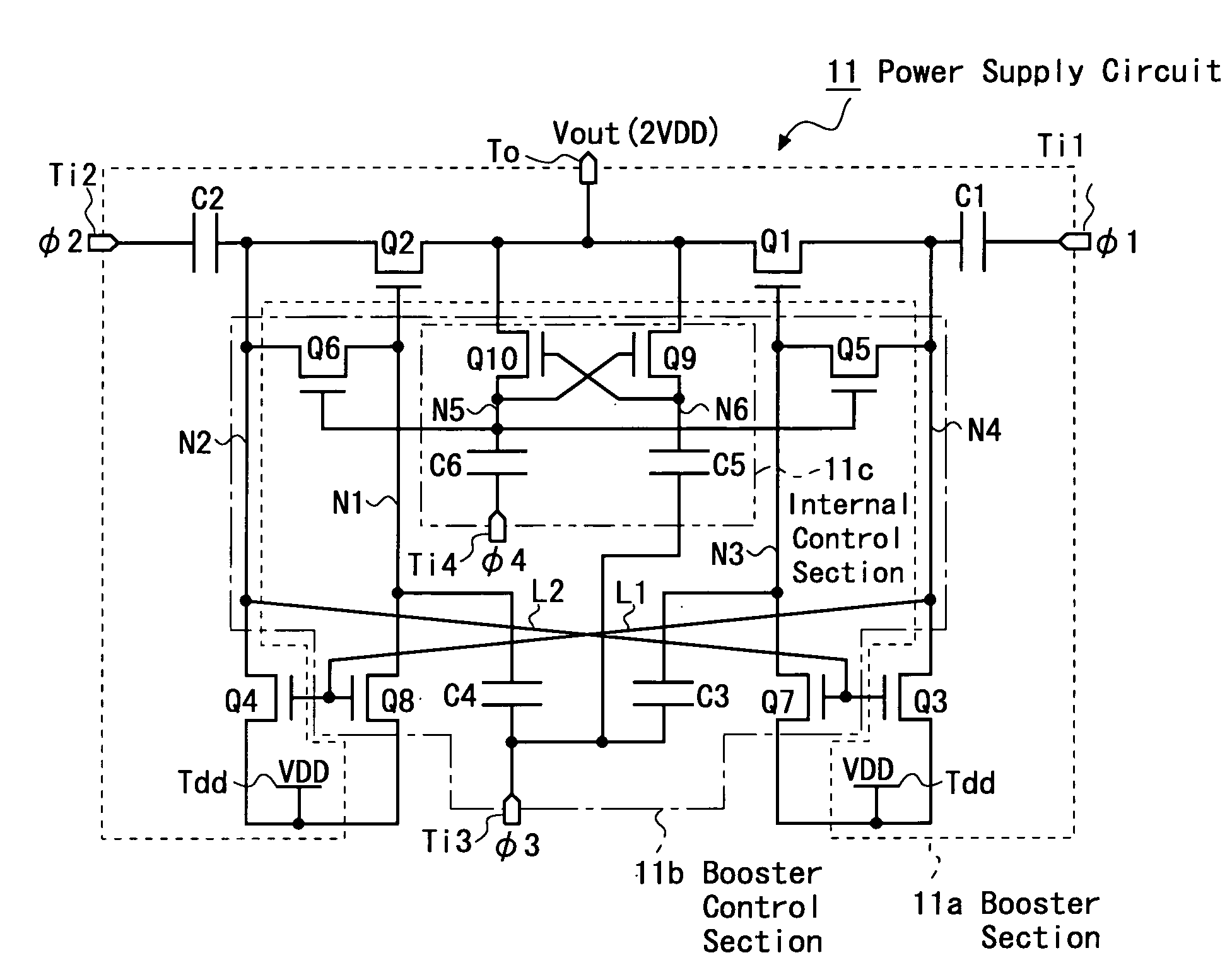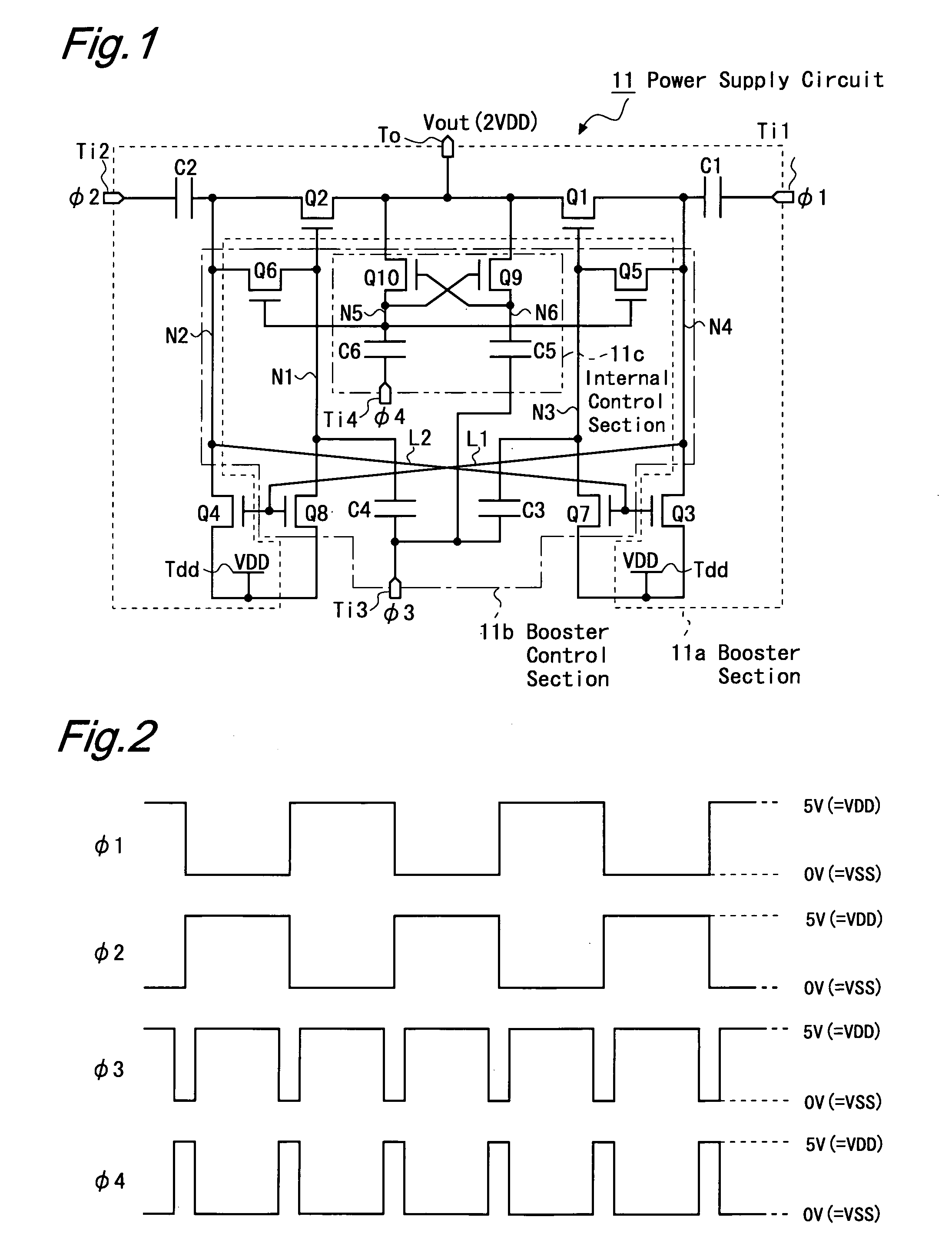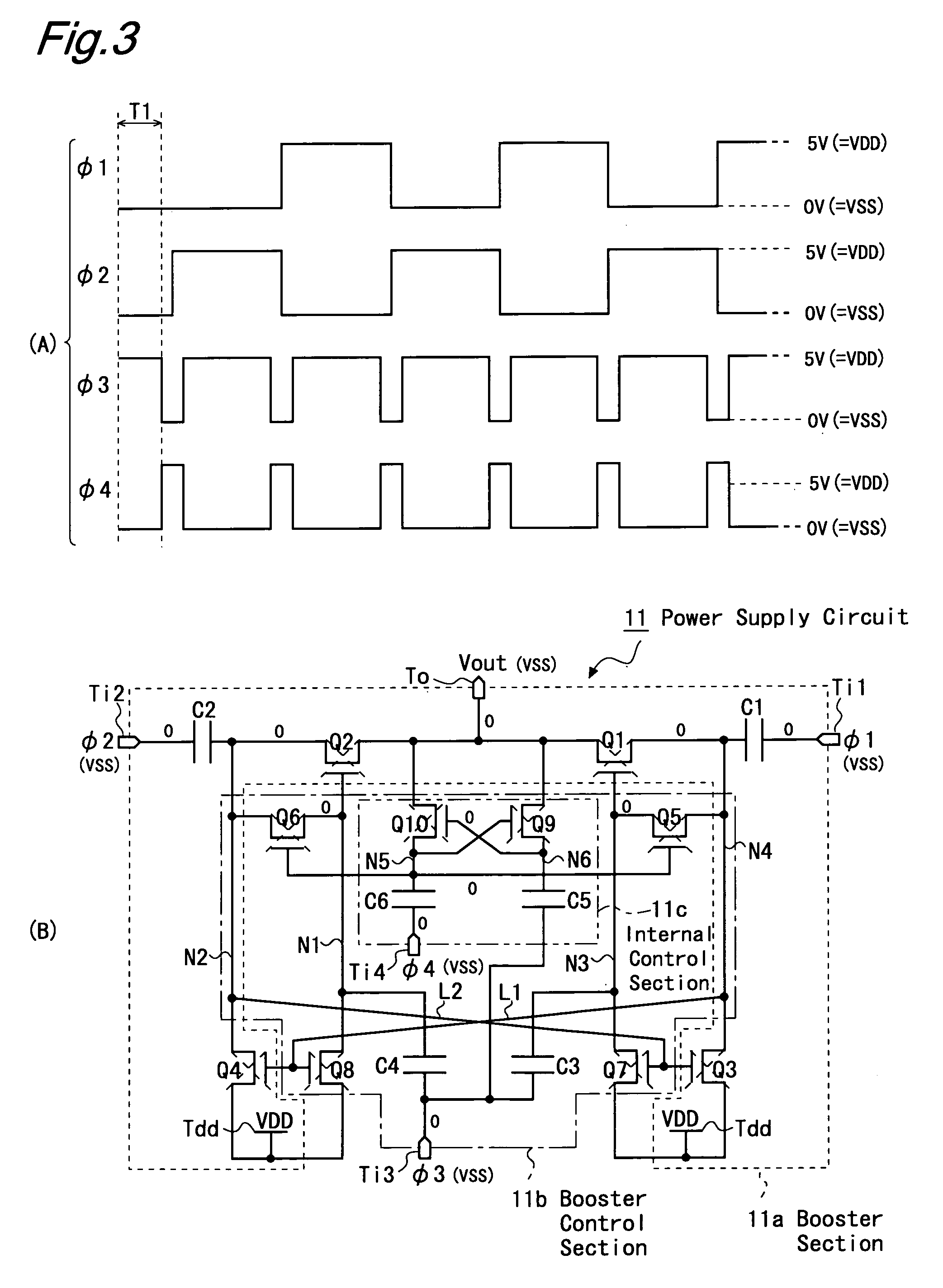Power supply circuit and display device including the same
a technology of power supply circuit and display device, which is applied in the direction of electric variable regulation, process and machine control, instruments, etc., can solve the problems of difficult implementation of converters as semiconductor circuits, size reduction, etc., and achieve the effect of eliminating voltage drop, simple configuration, and reducing cos
- Summary
- Abstract
- Description
- Claims
- Application Information
AI Technical Summary
Benefits of technology
Problems solved by technology
Method used
Image
Examples
Embodiment Construction
[0143]Hereinafter, an embodiment of the present invention will be described with reference to the attached drawings.
[0144]FIG. 1 is a circuit diagram which shows a configuration of a power supply circuit according to an embodiment of the present invention. This power supply circuit 11 includes: a booster section 11a which boosts an externally supplied input supply voltage VDD (>0) in a complimentary manner thereby generating a boosted supply voltage Vout (=2VDD); and a booster control section 11b which supplies the booster section 11a with signals for controlling the voltage boosting operation; and has external terminals including: a first and a second input terminals Ti1 and Ti2 for receiving externally supplied first and second clock signals φ1 and φ2 respectively; a third input terminals Ti3 for receiving a third clock signal φ3 for boosting the signals which controls the booster section 11a; a fourth input terminals Ti4 for receiving an externally supplied fourth clock signal φ4...
PUM
 Login to View More
Login to View More Abstract
Description
Claims
Application Information
 Login to View More
Login to View More - R&D
- Intellectual Property
- Life Sciences
- Materials
- Tech Scout
- Unparalleled Data Quality
- Higher Quality Content
- 60% Fewer Hallucinations
Browse by: Latest US Patents, China's latest patents, Technical Efficacy Thesaurus, Application Domain, Technology Topic, Popular Technical Reports.
© 2025 PatSnap. All rights reserved.Legal|Privacy policy|Modern Slavery Act Transparency Statement|Sitemap|About US| Contact US: help@patsnap.com



